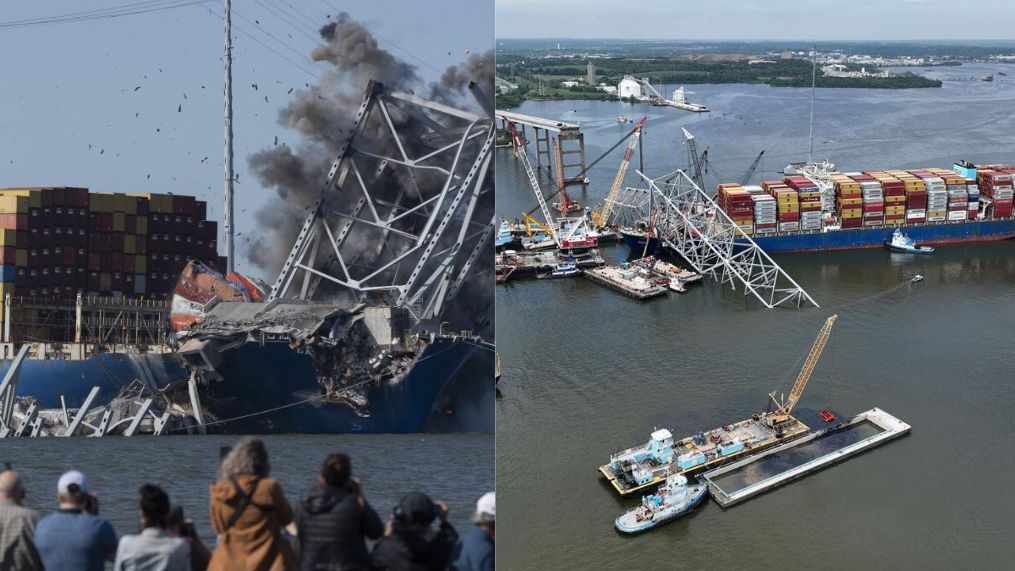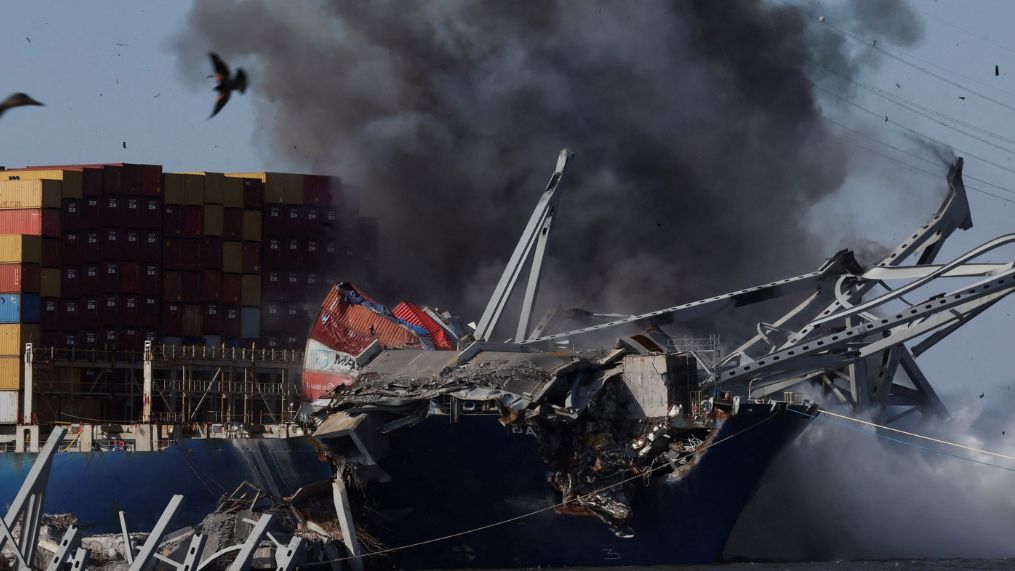In Baltimore, U.S. crews initiated salvage efforts by conducting controlled explosions to remove a section of the Francis Scott Key Bridge, which collapsed in March after a container ship, the Dali, lost power and collided with a bridge support.
The detonations aimed to break the bridge’s truss into smaller sections, facilitating the removal process using cranes and barges. Originally scheduled for Sunday, the operation was postponed due to unfavorable weather conditions.
The collapse tragically claimed the lives of six construction workers and disrupted traffic at the Port of Baltimore, the largest port in the U.S. for various cargo categories.
Since the incident, temporary channels have been opened to partially restore shipping operations. The U.S. Army Corps of Engineers aims to fully restore port access by the end of May.
Maryland estimates the reconstruction of the bridge will cost between $1.7 to $1.9 billion, with completion projected for fall 2028.

In April, the FBI launched a criminal investigation into the collapse. Safety investigators retrieved the ship’s “black box” recorder, containing data on its activities before the collision, including its position, speed, and communications.
Despite progress in the salvage operation, officials have yet to comment on the success of the detonations. The intricate removal process underscores the complexity of salvaging the collapsed structure while ensuring minimal disruption to maritime activities and safety.
The incident has prompted heightened scrutiny of infrastructure safety and maintenance protocols, emphasizing the need for robust measures to prevent similar disasters in the future.
As salvage efforts continue, authorities remain focused on determining the root causes of the collapse and implementing measures to prevent such incidents from recurring.





